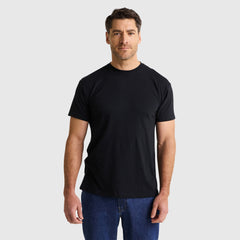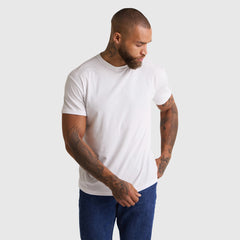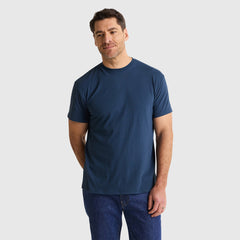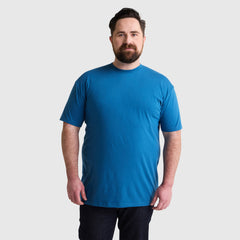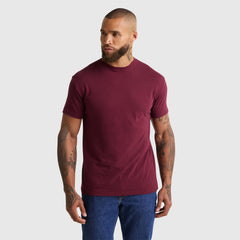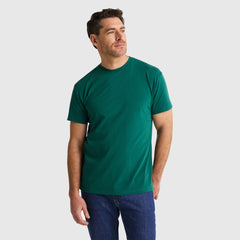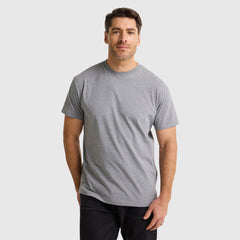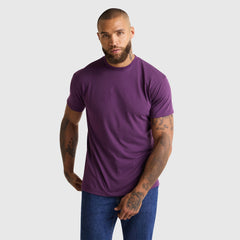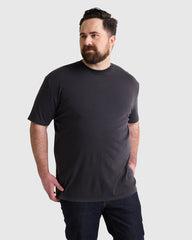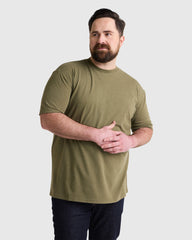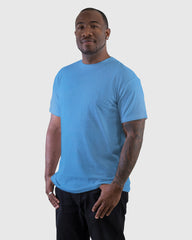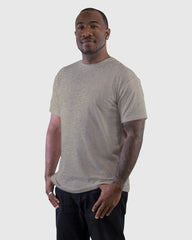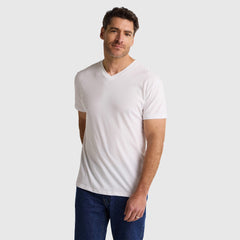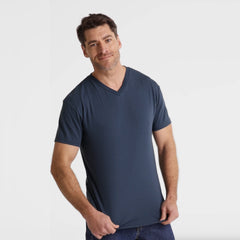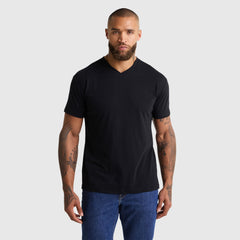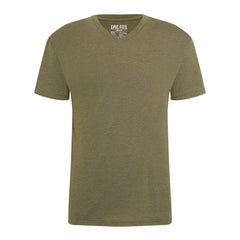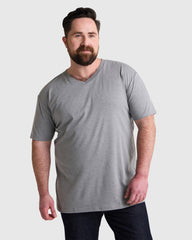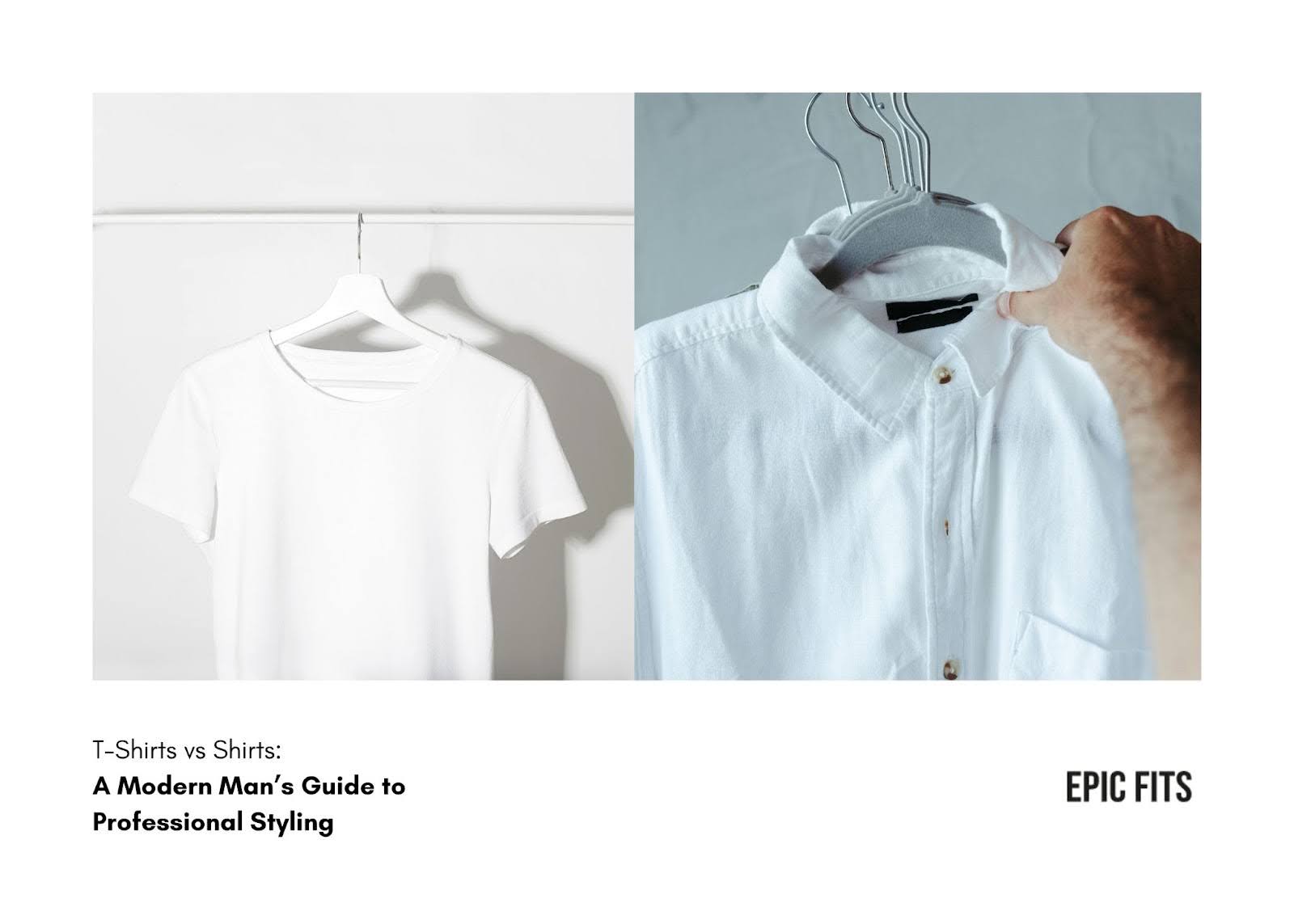TL;DR
-
T-shirts deliver relaxed comfort; shirts add structure and polish.
-
Wear T-shirts for casual, smart-casual, or layered looks; shirts for professional and dressier settings.
-
Fabric and GSM (fabric weight) affect comfort, drape, and durability.
-
Choose breathable cotton T-shirts or fit shirts that suit your body type.
-
Build a wardrobe that balances both comfort for everyday wear and structure for formal days.
Every man has faced that moment standing in front of the closet, trying to decide between a T-shirt and a shirt. One feels comfortable and easy; the other looks sharp and structured. The choice goes beyond fabric and buttons; it’s about the impression you want to make.
At Epic Fits, we believe style is built on comfort and confidence. Whether you’re heading to work, catching up with friends, or getting dressed for a date, the right fit can define your entire look. This guide breaks down the key differences between T-shirts and shirts for men, when to wear each, and how to style them for every occasion.
What’s the Difference Between a T-Shirt and a Shirt?
At a Glance: Collars, Buttons, Fabric, and Fit
-
T-shirts are collarless, typically made from stretch cotton or jersey, offering flexibility and ease.
-
Shirts have collars, buttons, and structure perfect for layering or dressing up.
- The average T-shirt weighs between 160–200 GSM, ideal for breathability, while most shirts use slightly heavier woven cotton for shape retention.
Neckline and Silhouette
A crew neck T-shirt gives a clean, classic shape and suits men with broader shoulders.
A V-neck T-shirt opens the neckline, balancing rounder faces or fuller builds.
Shirts come in styles from Oxford button-downs to spread-collar cottons; each changes how formal or relaxed you look.
If you’re not sure which neckline works for you, check our post on Crew Neck vs V-Neck: A Fat Man’s Guide to the Right T Shirt.
When to Wear T Shirts
A T-shirt is your everyday essential, casual, adaptable, and always relevant. It’s ideal for off-duty days, travel, or workspaces that value smart comfort over strict formality.
Everyday and Casual Settings
-
For errands, brunch, or weekend hangouts, choose cotton T-shirts for men in neutral tones like white, navy, or heather gray.
-
Pair with denim, joggers, or tailored shorts.
- For big or broad frames, choose regular or relaxed fits that skim the torso rather than cling.
Smart-Casual Workdays
Modern offices often embrace relaxed dress codes. Pair a black or white crew neck from our Crew Neck T-Shirts Collection with chinos and loafers. Add a casual blazer for meetings, you’ll look polished without feeling restricted.
For styling examples, read How to Wear a T Shirt with a Blazer.
Travel and Layered Outfits
For flights or long drives, soft, mid-weight T-shirts offer breathability and movement. Layer one under an overshirt or denim jacket for added warmth and dimension.
When to Wear Shirts
A shirt is your go-to for structure and confidence. The buttoned design, defined collar, and tailored fit add refinement that no T-shirt can match.
Professional and Formal Settings
Opt for fit shirts in cotton or linen blends for meetings, presentations, or interviews.
Pair a light-blue or white cotton shirt for men with dark trousers or chinos. Add a leather belt and shoes for a professional edge.
Business-Casual and Dinner Outfits
Roll up your sleeves, unbutton the top two buttons, and pair with chinos or dark denim. The look is clean, masculine, and effortlessly confident, perfect for after-work dinners or dates.
For inspiration, visit Outfits for Big Guys: How to Dress as an Overweight Man.
Elevated Casual and Layered Looks
Layer an unbuttoned Oxford shirt over a plain T-shirt to combine structure and comfort. This mix balances casual with style, an easy trick for men who prefer low-effort, high-impact dressing.
How to Choose the Right Fit and Fabric
Fit, Comfort, and Body Type
A slim fit T-shirt works well for leaner builds; a regular or slightly relaxed fit shirt flatters broader shoulders and midsections.
The key is alignment your seams, which should sit on the shoulder line, and your shirt should move with you, not against you.
Check our guide on Finding the Best Fitting T Shirts for Your Body Type for body-specific tips.
Sleeve Styles
Short sleeves are the everyday go-to, but full-sleeve T-shirts or rolled-up shirt sleeves give a more refined or transitional edge.
For a balanced look, the sleeve hem should hit mid-bicep and contour the arm lightly without tightness.
GSM and Fabric Weight
Borrowing from textile science, GSM (grams per square metre) tells you how dense or thick a fabric is:
-
Lightweight (130–160 GSM): airy and best for hot climates.
-
Midweight (160–200 GSM): versatile for daily wear.
- Heavyweight (200+ GSM): structured and long-lasting, ideal for cooler weather.
Epic Fits’ Classic Tees sit comfortably in the mid-weight category for the perfect year-round balance.
Styling and Pairing Tips
Polo and Collar T Shirts
A collar T-shirt for men, like a polo, is smart and sporty. Pair with chinos for semi-formal days or shorts for casual Fridays. Choose solid hues, navy, white, or olive, for a timeless look.
Color and Pattern Coordination
-
White T-shirts: crisp, universal, and a layering essential.
-
Black shirts for men: sophisticated, slimming, and evening-appropriate.
-
Graphic T-shirts: keep prints subtle and minimalist.
You can explore the Best White T Shirts for Men in 2025 to find your perfect neutral.
Mix & Match Combos
-
T-shirt + Blazer: minimal, polished, perfect for creative professionals.
-
Shirt + Jeans: smart-casual for weekends or dates.
- Open Shirt + Crew Neck: the easiest upgrade to a plain tee.
Material and GSM: Why Fabric Weight Matters
Cotton vs Blends vs Performance Fabrics
SANVT highlights GSM weight, but Epic Fits focuses on how the fabric feels and meets function.
-
Pure cotton offers softness and breathability.
-
Cotton-poly blends enhance stretch and shape retention.
- Performance fabrics add sweat control but can feel synthetic. Choose them sparingly.
For most climates, midweight cotton remains the perfect sweet spot of comfort and durability.
Sustainability and Comfort
Natural fibers like cotton and modal are long-lasting, gentle on the skin, and easy to maintain.
When choosing basics, prioritize durability over fast fashion. A quality tee that lasts years is more sustainable than several cheap replacements.
For longevity tips, see 5 Signs High-Quality T Shirts Last Years
Building a Versatile Wardrobe
A balanced wardrobe includes both T-shirts and shirts for me, mixing structure with comfort. Here’s a capsule plan:
|
Category |
Essentials |
Styling Tip |
|
T Shirts |
Black, White, Heather Gray, Navy |
Pair with jeans, chinos, or under open shirts |
|
Shirts |
White Oxford, Blue Cotton, Plaid, Black |
Layer with blazers or wear untucked for casual Fridays |
|
Seasonal Add-ons |
Polo, Long Sleeve Tee, Linen Shirt |
Rotate fabrics by climate |
You can also shop bundle packs like the Crew Neck 6-Pack to stock up on high-quality basics that last.
For inspiration, read Building a Wardrobe with T Shirt Bundles for Overweight Men.
Frequently Asked Questions
Q. What is the main difference between a shirt and a T-shirt?
A shirt is a tailored garment; it usually has a collar, buttons, cuffs, and structure, making it suitable for professional or formal wear. AT-shirt is collarless, made of knit fabric, and designed for comfort and everyday use. You can call a T-shirt a type of shirt, but not every shirt is a T-shirt.
Q. Is a T-shirt considered formal or casual wear?
A T-shirt is generally casual, but modern styling has blurred the lines. A clean, solid-colored crew neck T-shirt paired with a blazer or overshirt can pass as semi-formal in creative workplaces. For classic formality, though, a buttoned cotton shirt for men still wins.
Q. Which spelling is correct: T-shirt, t-shirt, or tee shirt?
According to language experts, “T-shirt” (with a capital T and a hyphen) is the most widely accepted form. It represents the garment’s T-shaped design when laid flat. The term “T-shirt” is more informal but still understood globally.
Q. Can a T-shirt be worn in place of a shirt?
Yes, but context matters. You can replace a shirt with a T-shirt for business-casual offices, travel, or weekend outings. Choose high-quality, structured cotton T-shirts in neutral tones like white, navy, or black. For board meetings or events, a proper fit shirt with a collar remains more appropriate.
Q. Why do athletes often prefer cotton T-shirts over polyester?
Cotton absorbs sweat better and feels softer against the skin, which makes it ideal for comfort and practice sessions. Polyester dries faster but can trap heat. The best solution is a cotton-poly blend, which combines breathability with durability, exactly what you’ll find in Epic Fits’ Crew Neck T Shirts.
Q. Which is better in hot weather, a shirt or a T-shirt?
In summer or humid climates, a lightweight cotton T-shirt (around 160 GSM) keeps you cooler because the knit fabric breathes and stretches. A cotton or linen shirt also works well, especially if you roll up the sleeves and leave it untucked.
Q. Do colors affect how hot a T-shirt feels in the sun?
Yes. A black T-shirt absorbs more heat, while a white T-shirt reflects light and stays cooler. For outdoor comfort, choose lighter shades or moisture-wicking fabrics. You can read more in Best White T-Shirts for Men in 2025.
Q. How can I tell the difference between cheap and high-quality T-shirts?
Quality shows in the fabric density (GSM), stitching, and fit retention after washes. Cheap tees feel thin and lose shape quickly. A premium cotton TT-shirt-like Epic Fits’ Classic Tee maintains softness, structure, and color even after years of wear.
Q. What’s the difference between a polo and a T-shirt?
A polo is technically a T-shirt with a soft collar and button placket. It sits between casual and formal, more refined than a tee but more relaxed than a shirt. Pair polos with chinos or shorts for a smart, summer-friendly outfit.
Q. Can I wear T-shirts with prints or logos in public or professional settings?
It depends on the occasion and design. Minimal graphic T-shirts are fine for casual wear, but avoid loud logos or slogans in professional or travel environments. Opt for solid or subtle designs when in doubt.
Q. Which is better overall, TT-shirts or shirts for men?
Neither replaces the other. A T-shirt delivers all-day comfort and versatility; a shirt provides structure and formality. Every modern wardrobe needs both soft cotton T-shirts for casual and travel days, and crisp fit shirts for meetings and occasions.
